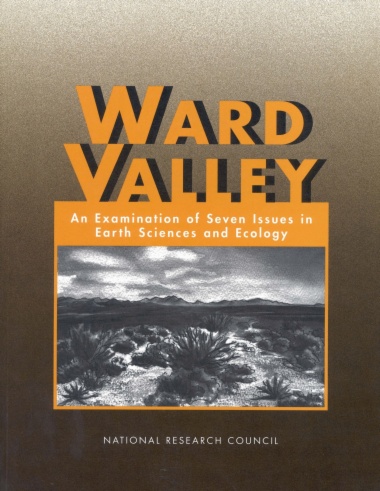The book examines specific scientific and technical safety issues related to the proposed low-level radioactive waste site at Ward Valley, California. It includes, among other issues, evaluation of the potential for infiltration by shallow subsurface water, contamination of ground water and the Colorado River, damaging effects on the desert tortoise habitat, and restoration of the native vegetation.
- Cover
- FRONT MATTER
- EXECUTIVE SUMMARY
- 1 INTRODUCTION
- 2 SETTING OF THE WARD VALLEY SITE
- 3 RECHARGE THROUGH THE UNSATURATED ZONE
- 4 INFILTRATION AND LATERAL FLOW
- 5 GROUND-WATER PATHWAYS TO THE COLORADO RIVER
- 6 SUBSURFACE MONITORING PROGRAM
- 7 FLOOD CONTROL AND ENGINEERING CONSIDERATIONS
- 8 THE DESERT TORTOISE
- 9 REVEGETATION
- APPENDIX A - THE COMMITTEE'S CHARGE
- APPENDIX B - CLASSIFICATION OF WASTES
- APPENDIX C - GENERAL TABLE OF COMMON CONVERSIONS
- APPENDIX D - GLOSSARY OF TERMS
- APPENDIX E - DISSENTING STATEMENT ON ISSUE 1
- APPENDIX F - DISSENTING STATEMENT ON ISSUE 1 AND 7
- APPENDIX G - BIOGRAPHICAL SKETCHES OF COMMITTEE MEMBERS

